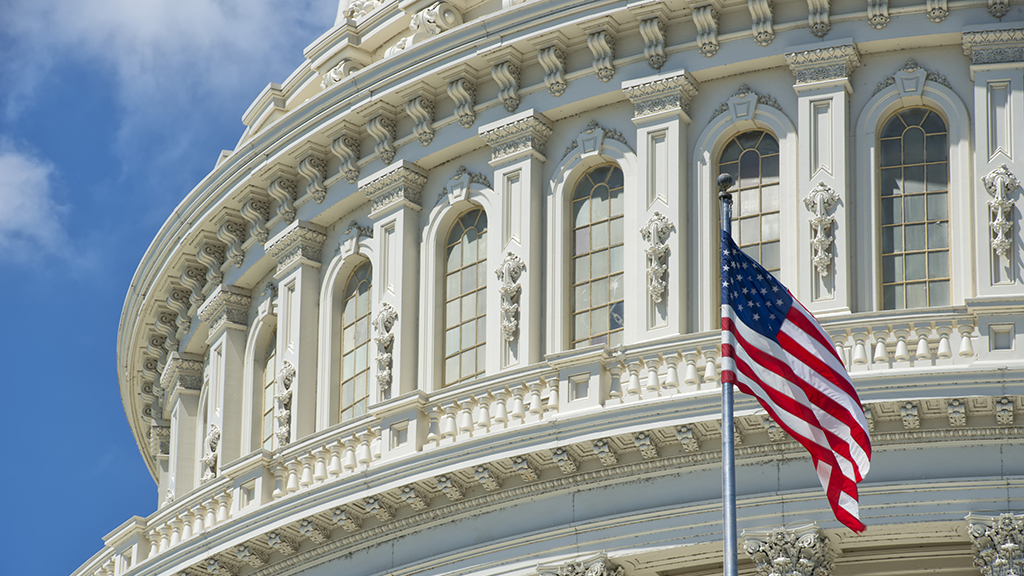Legislative Update
Update on Federal Funding and the Rural STEM Education Act
By Jodi Peterson
Posted on 2020-10-05

Disclaimer: The views expressed in this blog post are those of the author(s) and do not necessarily reflect the official position of the National Science Teaching Association (NSTA).
Let Your Voice Be Heard!
In these challenging times, it is important that educator voices be heard as policymakers make important decisions on teaching and learning.
The STEM Education Coalition and NSTA have developed a survey seeking input on the impact the COVID-19 pandemic has had on STEM education. Survey results will be used to inform upcoming advocacy and policy initiatives in the next few months. Please take a minute to complete the survey, which can be found here.
In addition, NSTA is seeking teacher input on the federal Request for Information on STEM education issued last month by the Office of Science and Technology Policy. As we develop our organization’s response to this RFI, we would like to get your feedback on selected questions, which can be found here. The questions focus on distance learning, STEM education digital resources, transdisciplinary learning, and equity.
Please take a few minutes to access the surveys and share your feedback and experiences!
Federal Funding Update
The House and Senate have passed, and the President has signed, a continuing resolution (CR) that will fund federal activities through December 11, 2020 (and ensure the government did not shut down on Sept. 30.)
Also last week on Oct. 1, House Democrats passed a $2.2 trillion coronavirus relief measure. The updated Heroes Act increases education funding and increases support for child care, libraries and museums, and broadband access.
The bill includes $208 billion for the Education Stabilization Fund that would run through the Department of Education to states, with $175 billion for K-12 and $27 billion for higher education. Additionally, the bill includes a separate and additional $5 billion to support emergency facilities repairs for schools to address COVID-19 needs, including allowable uses for improving sanitation, personal hygiene, air quality, hand washing stations, outdoor spaces, and purchasing personal protection equipment. It includes $12 billion for closing the homework gap, including allowable uses to purchase WiFi and hotspots, and $3 billion for emergency home connectivity needs.
Links to the Bill text can be found here. Education funding starts on page 148, school facilities funding on page 158. Also there is a Section by section summary and State and local relief summary.
Republicans are not on board with this funding, so it is highly unlikely that an additional COVID relief bill will be signed into law before the Nov. 3 election.
GAO Criticizes Administration Guidance for Re-Opening Schools
A new report from the Government Accountability Office on the federal response to the pandemic criticizes the Trump Administration’s “lack of cogent, clear, and consistent federal guidance” for reopening schools.
The report claims that “portions of CDC’s guidance on reopening K-12 schools are internally inconsistent, and some CDC, White House, and Education statements appear incongruent with a risk-based approach to determining school operating status.”
It also faulted CDC’s guidance on screening children and employees entering K-12 schools, and guidance as what to do if a student or staff member tests positive for COVID-19 as “inconsistent.”
The report notes that while the CDC and the Secretary of Education have both noted that school reopening plans should be tailored to the needs of local communities, the CDC’s July guidance published in July begins with a statement urging schools to reopen in person, and information encouraging schools to reopen in person is embedded throughout the guidance.
Further, the White House urged that all schools “fully reopen” and suggested that current or future federal funds may be withheld from school districts that do not return to in-person education.
Access the full report here.
Rural STEM Act Passes the House
Last month the House of Representatives passed the Rural STEM Education Bill. The bill directs the National Science Foundation (NSF) to support research regarding STEM education in rural schools that would advance innovative approaches to support and sustain high-quality STEM teaching in rural schools and identify the barriers rural students face in accessing high-quality STEM education. It would promote the development of innovative solutions to improve the participation and advancement of rural students in grades Pre-K through 12 in STEM studies.
The bill would also allow NSF to establish a pilot program of regional cohorts in rural areas to provide peer support, mentoring, and hands-on research experiences for rural STEM educators in order to build an ecosystem of cooperation among educators, researchers, academia, and local industry.
The STEM Education Coalition issued a statement praising the bill and its efforts to strengthen STEM education in rural areas. To date, there is no similar legislation in the U.S. Senate.
Stay tuned, and watch for more updates in future issues of NSTA Reports.
Jodi Peterson is the Assistant Executive Director of Communications, Legislative & Public Affairs for the National Science Teaching Association (NSTA) and Chair of the STEM Education Coalition. Reach her via e-mail at jpeterson@nsta.org or via Twitter at @stemedadvocate.
The mission of NSTA is to promote excellence and innovation in science teaching and learning for all.


